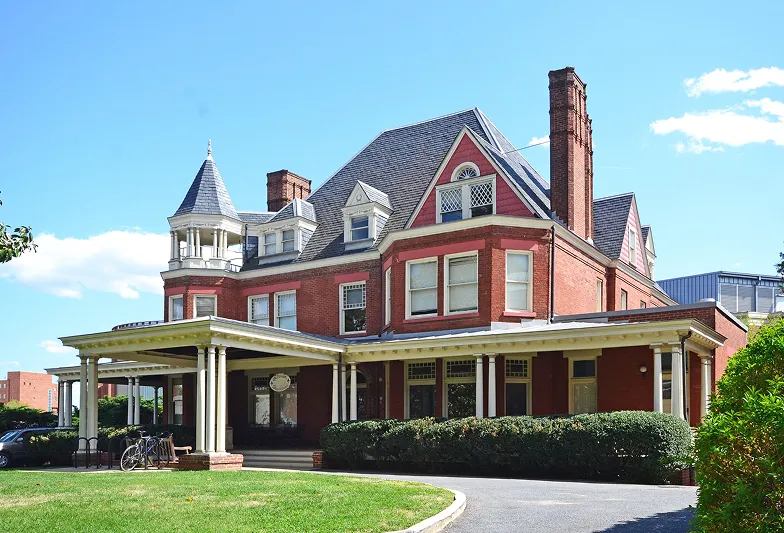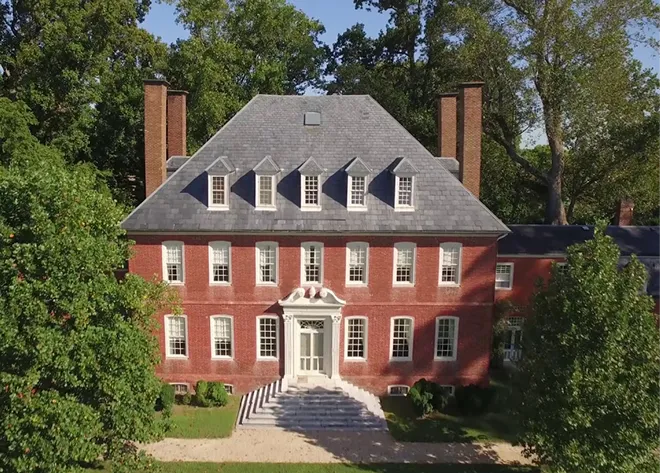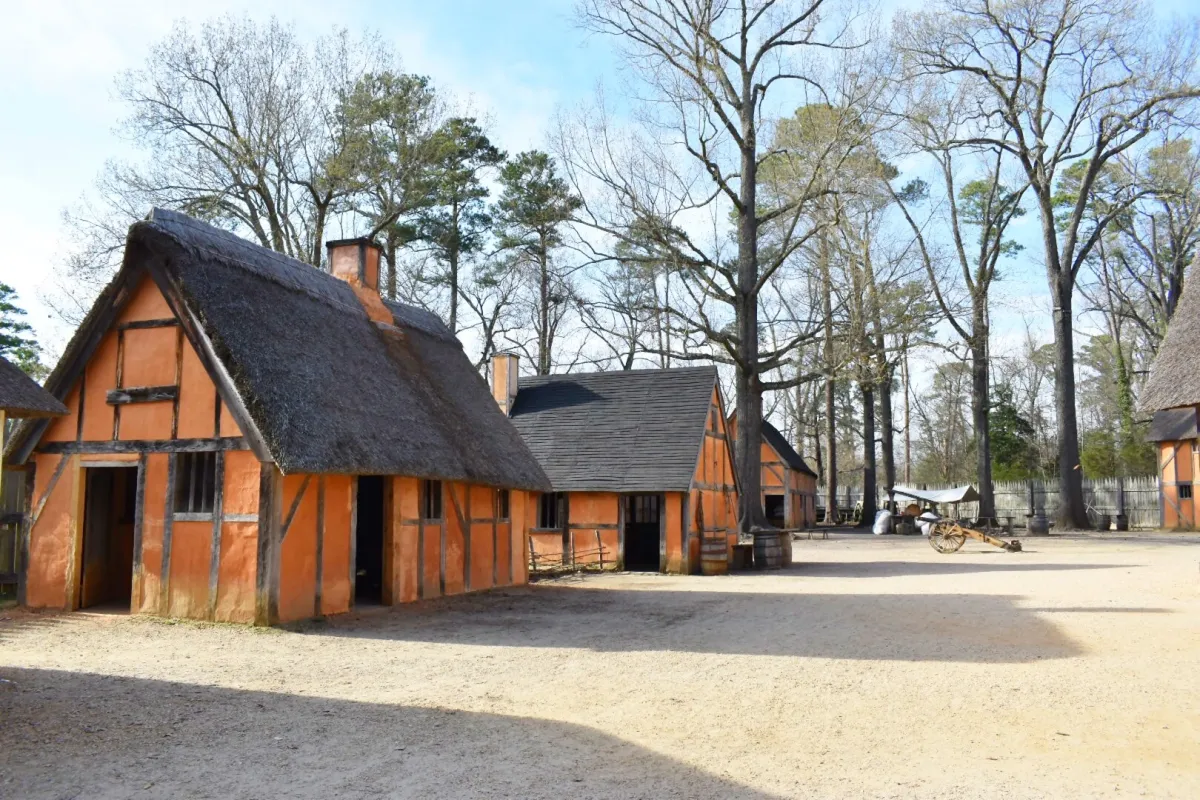At Commonwealth Contractors, our approach to building mirrors my personal philosophy on life, blending practicality with a touch of ingenuity. With a deep respect for classical building principles and a keen eye for modern improvements, you can rest assured that when you collaborate with Commonwealth Contractors, your project will be managed with quality and integrity.
.svg)


Choosing the right siding is one of the most important decisions you’ll make when building or renovating a home in Virginia. The exterior of your house not only defines its curb appeal but also impacts durability, maintenance, and long-term value. Two of the most popular siding options are Hardie Board (fiber cement siding) and vinyl siding. Each offers unique benefits and trade-offs. This guide will help you compare Hardie Board and vinyl siding so you can make the best choice for your new build or luxury renovation.
In the heart of Charlottesville, VA, Commonwealth Contractors are established experts in installing both Hardie Board and vinyl siding for new home builds and high-end renovations. If you have any questions after reading this guide, please reach out.
Understanding Hardie Board: The Fiber Cement Leader
.webp)
What is Hardie Board?
Hardie Board is the flagship fiber cement siding product from James Hardie Industries, a global leader in exterior building solutions. Developed as a safer, more durable alternative to asbestos cement, Hardie Board is engineered for strength, longevity, and beauty. It’s made from a blend of Portland cement, silica sand, cellulose fibers, and water, resulting in a product that stands up to the harshest weather and environmental conditions.
How Hardie Board is Made
The manufacturing process involves mixing the raw materials into a slurry, layering them into thin sheets, compressing under high pressure, and curing in autoclaves. The result is a dense, stable board that can be finished with realistic wood-grain textures or smooth surfaces. James Hardie’s ColorPlus® Technology offers factory-applied, baked-on finishes in a wide range of colors, providing superior fade resistance and reduced maintenance.
Hardie Board Product Lines
- HardiePlank® Lap Siding: Classic horizontal siding, available in smooth or wood-grain textures.
- HardiePanel® Vertical Siding: Vertical panels for modern or traditional designs.
- HardieShingle® Siding: Mimics the look of cedar shingles or shakes.
- HardieTrim® Boards: Fiber cement trim for windows, doors, and corners.
- HardieSoffit® Panels: Ventilated or non-ventilated panels for eaves and porch ceilings.
- Artisan® Collection: Premium siding with thicker profiles and deeper shadow lines.
Vinyl Siding: The Popular, Budget-Friendly Choice
What is Vinyl Siding?
Vinyl siding is made from polyvinyl chloride (PVC) resin, often with additives for color, flexibility, and UV resistance. It’s a lightweight, cost-effective option that has become the most widely used siding material in the United States. Vinyl siding is available in a vast array of colors, textures, and styles, including traditional lap, vertical panels, shakes, and insulated options.
How Vinyl Siding is Made
Manufacturers extrude PVC resin into panels, which are then embossed with wood-grain or smooth finishes. The color is integrated throughout the material, so scratches and chips are less noticeable. Vinyl siding is easy to install and requires minimal maintenance, making it a favorite for budget-conscious homeowners and large-scale developments.
Hardie Board vs Vinyl Siding: Detailed Comparison
Durability and Longevity
When it comes to standing up to the elements, Hardie Board is engineered for maximum durability. Its fiber cement composition resists moisture, rot, insects, and fire, with a lifespan of 30–50+ years. Vinyl siding, while resistant to moisture and insects, can crack, warp, or fade over time, especially in extreme weather. It typically lasts 20–40 years, depending on quality and maintenance.
- Hardie Board: High impact resistance, non-combustible, withstands winds up to 150 mph.
- Vinyl Siding: Moderate impact resistance, combustible, withstands winds up to 110 mph.
Maintenance Requirements
Vinyl siding is often chosen for its low maintenance. It never needs painting, and cleaning usually involves a simple wash with a garden hose. However, it can be susceptible to mold, mildew, and algae, especially in humid climates. Hardie Board, especially with ColorPlus® Technology, requires only occasional washing and repainting every 10–15 years. Both materials allow for easy replacement of damaged sections.
- Hardie Board: Occasional washing, repainting every 10–15 years (unless using ColorPlus®).
- Vinyl Siding: No painting required, but may need more frequent cleaning in shaded or damp areas.
Aesthetics and Curb Appeal
For luxury homes and high-end renovations, appearance matters. Hardie Board offers highly realistic wood-grain textures and deep shadow lines, closely mimicking the look of real wood. Its color options are extensive, and custom painting is possible. Vinyl siding, while available in many colors and styles, can sometimes appear plastic-like up close and may not offer the same premium look as fiber cement.
- Hardie Board: Superior realism, premium finishes, wide range of styles and colors.
- Vinyl Siding: Good variety, but less authentic appearance compared to fiber cement.
Cost Comparison
Budget is a key factor for many homeowners. Vinyl siding is generally less expensive, both in material and installation costs. Hardie Board has a higher upfront cost, but its durability and long-term value can offset the initial investment, especially for those planning to stay in their home for many years.
- Hardie Board: $4.50–$13.00 per sq. ft. installed.
- Vinyl Siding: $2.90–$8.50 per sq. ft. installed.
Environmental Impact and Sustainability
Hardie Board is made from natural, abundant materials and manufactured using sustainable practices. James Hardie is committed to reducing its carbon footprint and environmental impact. Vinyl siding, on the other hand, is a petroleum-based product with a higher environmental impact and limited recyclability. For eco-conscious homeowners, Hardie Board is the clear winner.
- Hardie Board: Sustainable materials, lower environmental impact.
- Vinyl Siding: Petroleum-based, higher environmental impact.
Energy Efficiency and Insulation
Vinyl siding is available in insulated versions, which can improve a home’s energy efficiency. Hardie Board itself does not provide significant insulation, so additional insulation may be required during installation. For those prioritizing energy efficiency, insulated vinyl siding is a strong contender.
- Hardie Board: Requires separate insulation for energy efficiency.
- Vinyl Siding: Insulated options available for improved efficiency.
Warranty and Manufacturer Support
Both Hardie Board and vinyl siding come with strong warranties and extensive dealer networks. James Hardie offers a 30-year limited warranty on its siding and a 15-year finish warranty for ColorPlus® products. Most vinyl siding manufacturers offer lifetime limited warranties, though coverage may be prorated over time.
Which Siding is Right for Your Virginia Home?
Recommended Use Cases for Hardie Board
Hardie Board is ideal for:
- Luxury homes and high-end renovations where premium appearance and durability are priorities.
- Areas prone to severe weather, wildfires, or coastal conditions.
- Homeowners seeking long-term value, fire resistance, and sustainability.
Recommended Use Cases for Vinyl Siding
Vinyl siding is best for:
- Budget-conscious homeowners seeking a lower upfront cost and minimal maintenance.
- Rental properties, starter homes, or projects in moderate climates.
- Those prioritizing energy efficiency with insulated siding options.
Frequently Asked Questions
How long does Hardie Board last compared to vinyl siding?
Hardie Board typically lasts 30–50+ years, while vinyl siding lasts 20–40 years depending on quality and maintenance.
Is Hardie Board more fire-resistant than vinyl siding?
Yes. Hardie Board is non-combustible and has a Class A fire rating, making it ideal for wildfire-prone areas. Vinyl siding is combustible and can melt or warp under high heat.
Which siding requires less maintenance?
Vinyl siding requires less maintenance overall, as it never needs painting. Hardie Board with ColorPlus® Technology also offers low maintenance, but may require repainting every 10–15 years if not using the factory finish.
Can I paint vinyl siding?
While it is possible to paint vinyl siding, it is not generally recommended by manufacturers. Hardie Board, on the other hand, can be custom painted to match any color scheme.
Why Choose Commonwealth Contractors for Your Home Build?
.webp)
Whether you’re building a new luxury home or upgrading your current residence, the right siding makes all the difference. Commonwealth Contractors in Charlottesville, VA, are experts in both Hardie Board and vinyl siding installation. We help you weigh the pros and cons, select the best materials for your needs, and deliver flawless results that stand the test of time.
Ready to transform your home’s exterior? Contact Commonwealth Contractors today to schedule a consultation and discover how our expertise, premium product selection, and commitment to quality can bring your vision to life.

.svg)
%2520(1).webp)




.webp)
.webp)



.webp)
.webp)











.webp)
.webp)

.webp)
.webp)
%2520(1).webp)
%2520(1).webp)
%2520(1).webp)

.webp)
.webp)
%2520(1).webp)
%2520(1).webp)

%2520(2).webp)

%2520(1).webp)
%2520(2).webp)
.webp)



.webp)
.webp)
%2520(2).webp)
.webp)
.webp)
%2520(1).webp)

.webp)
%2520(3)%2520(1).webp)
.webp)
%2520(1)%2520(1).webp)
.webp)
%2520(1).webp)
%2520(2)%2520(1).webp)